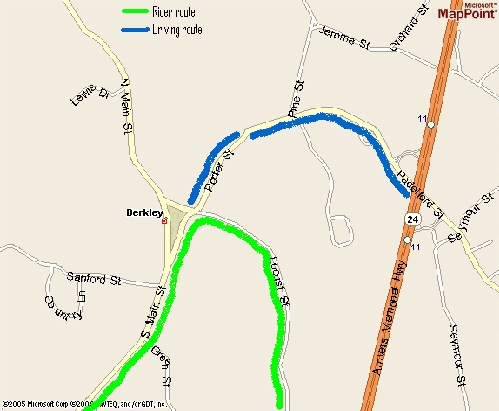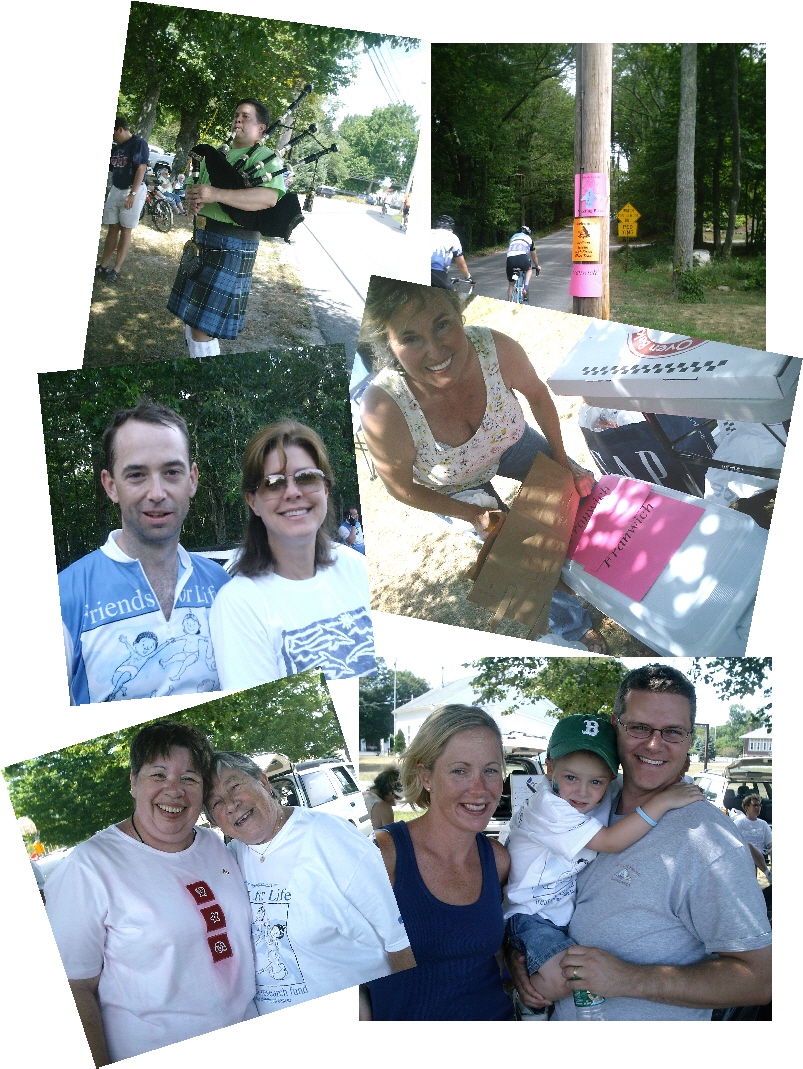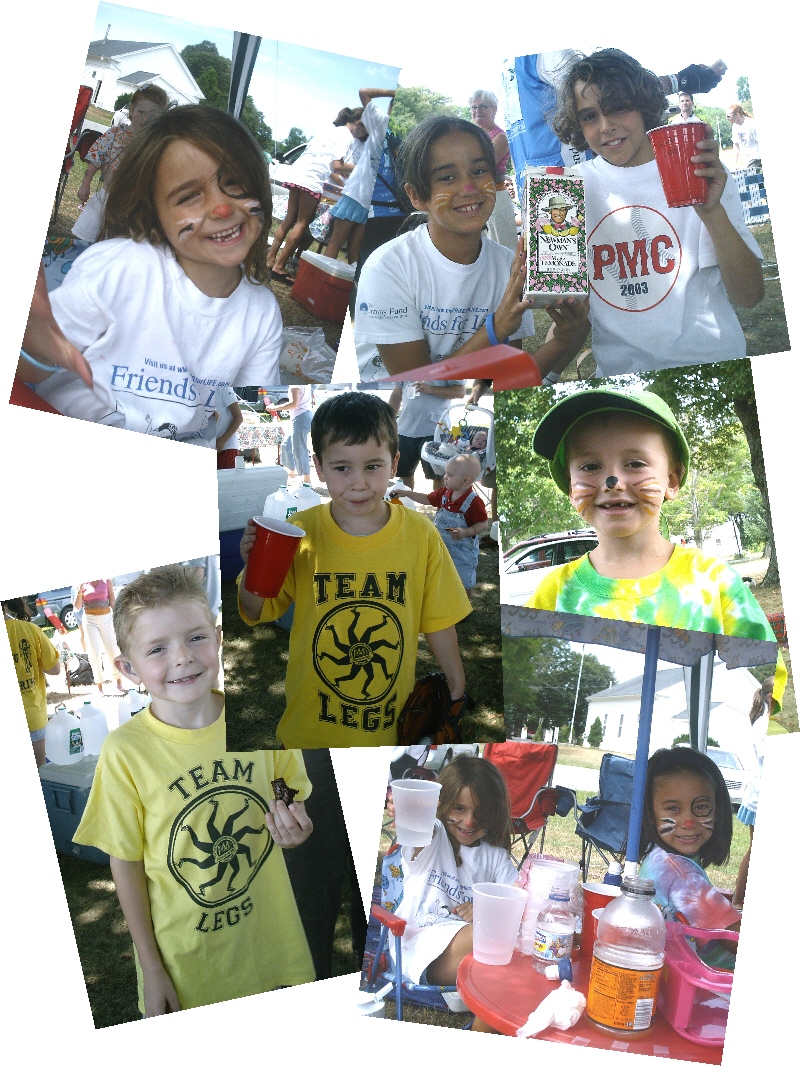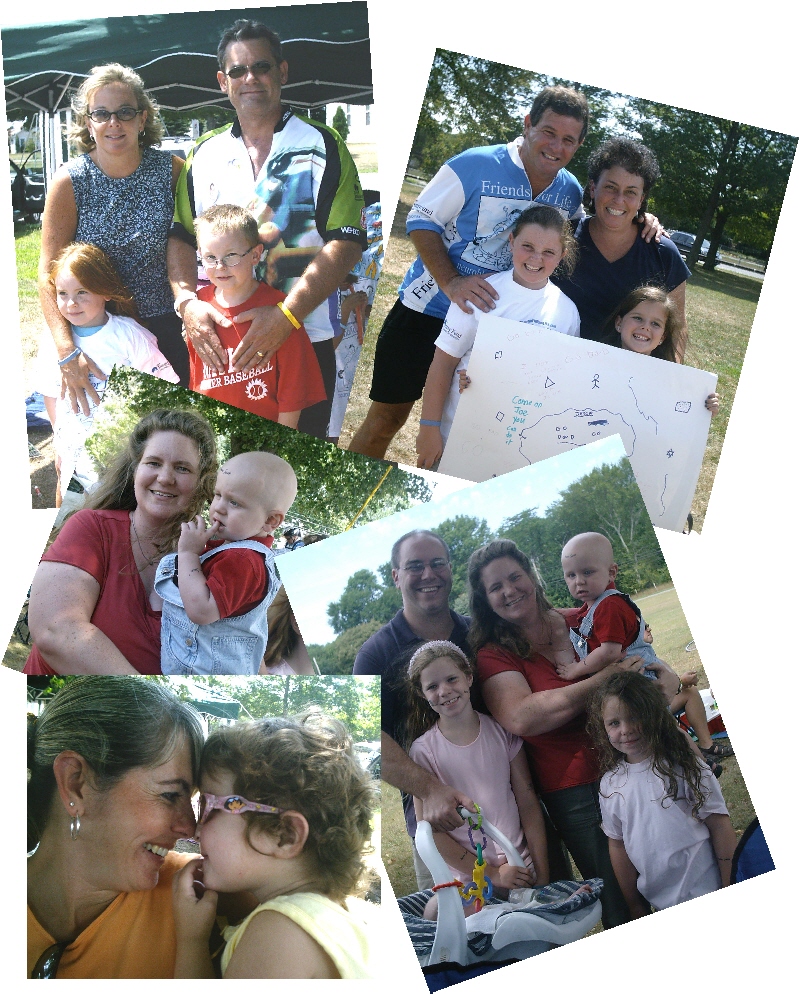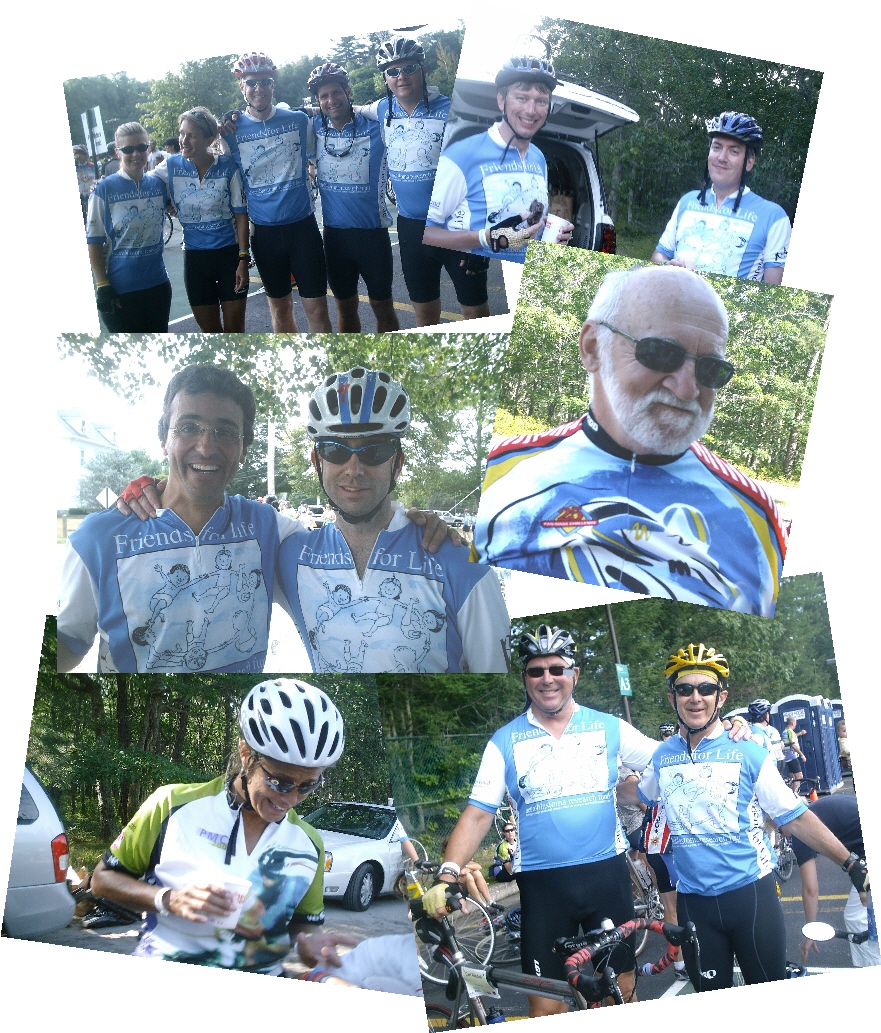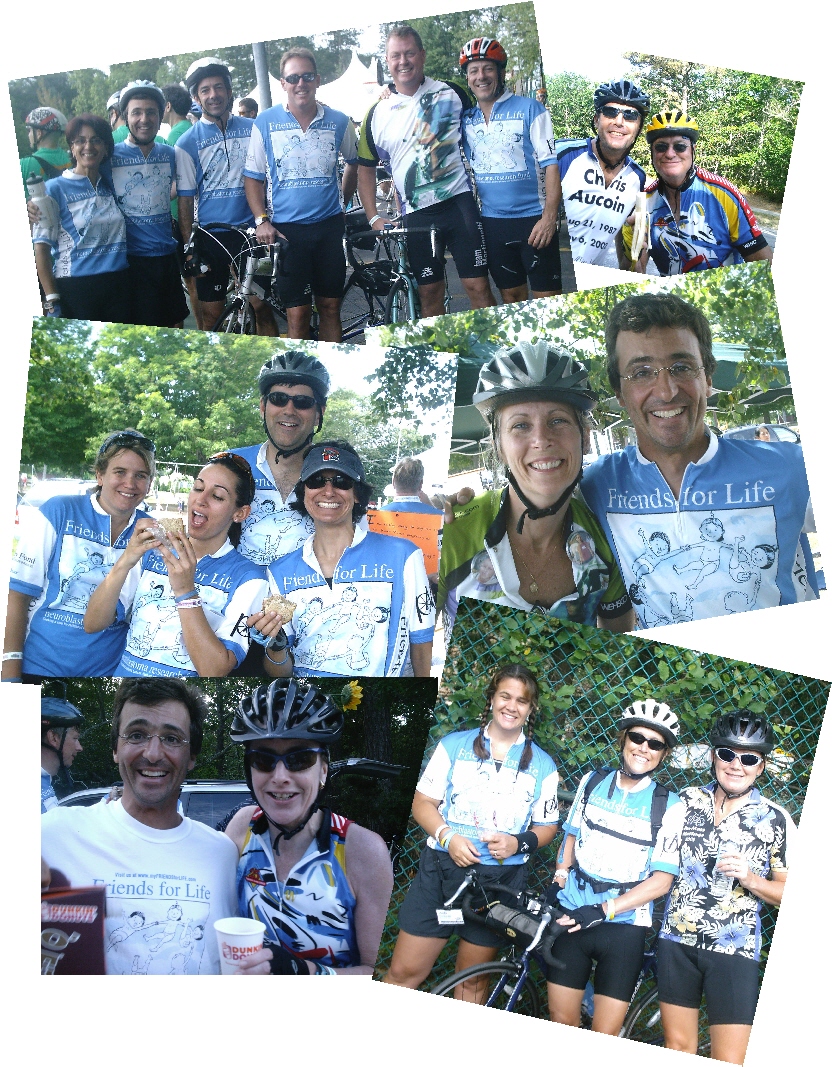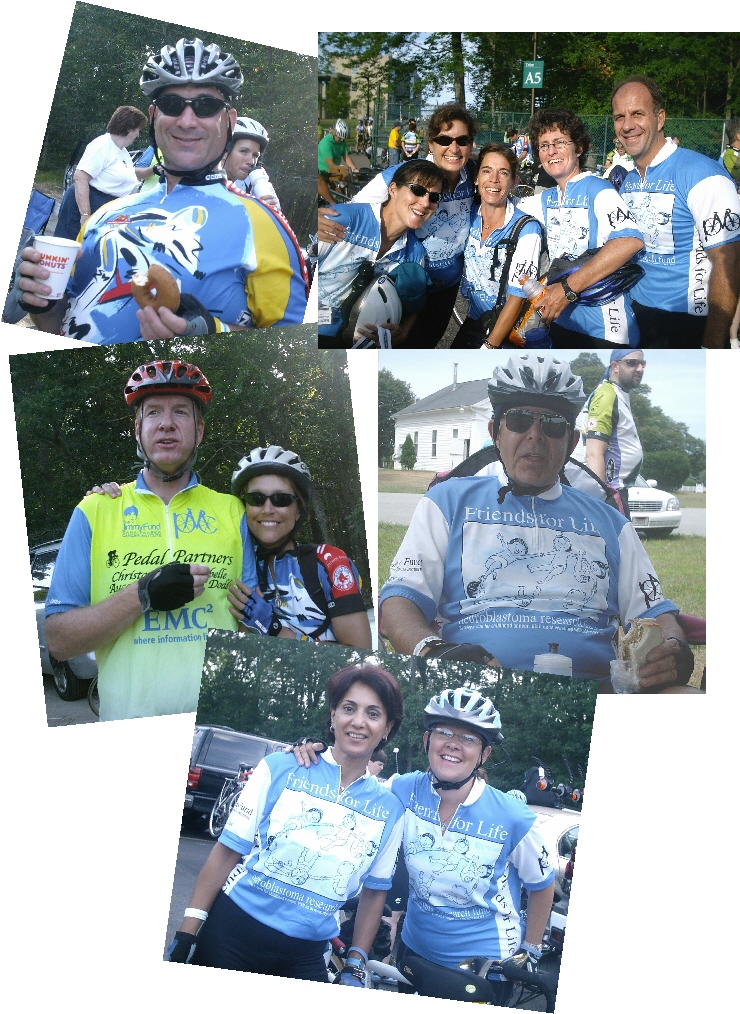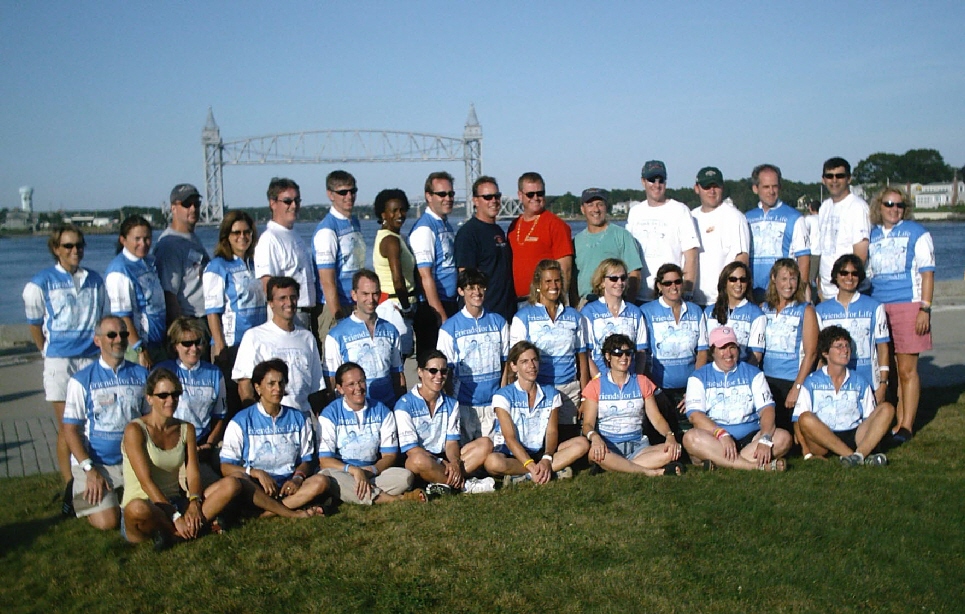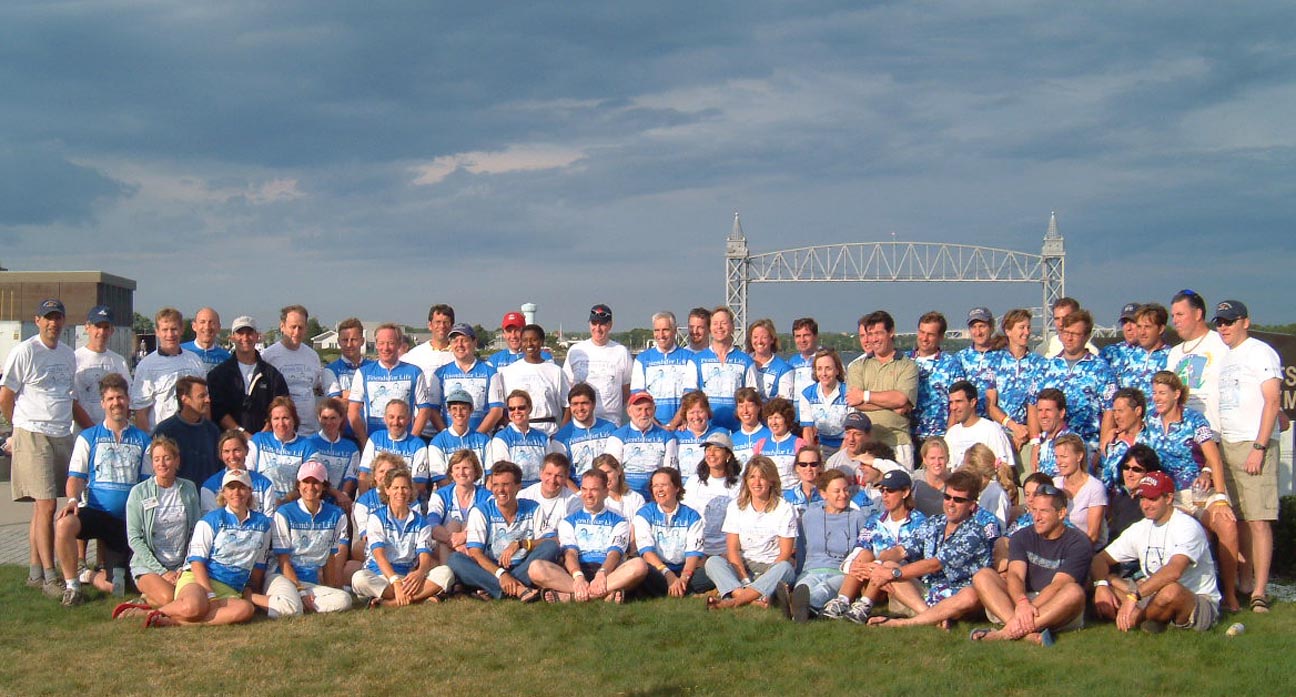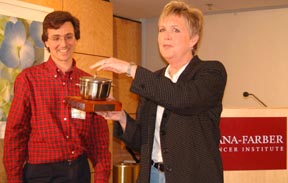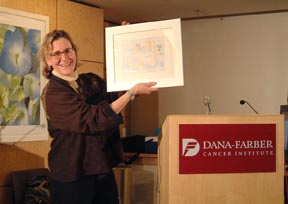Riding for a cure
By Mike Spellman/ mspellman@cnc.com Scituate Mariner
Thursday, August 5, 2004
21 Scituate residents to ride in 25th annual Pan-Mass Challenge this weekend.
A total of 21 residents from Scituate will ride in the 25th annual Pan-
Massachusetts Challenge (PMC), the nation's most successful bike-a-thon
for charity, on Aug. 7 and 8.
Alone or in teams, athletes or amateurs, strong or weak, they ride to
accomplish a single, unified goal - a world without cancer.
The Scituate riders are Charlene Richard, Dana Spires, Daniel Rose,
David Pinkham,
Deidre King, John King,
Dwight Walker, Frank Gaziano, Jim Harmon, Karen Maguire, Kevin
McCarthy, Liz Shallenberger, Maureen McLaughlin,
Nancy Donovan,
Rich Bonanno, Rose Lockwood,
Steven Donovan, Steven Nothern,
Thomas Aylesworth, Jay Harmon, Tara Stone.
-
Deidre and John King have had cancer touch their lives in a
profound way, but they say their story is proof positive that undertakings such as the Pan Mass Challenge are working.
The Scituate couple ride specifically to find a cure for
Neuroblastoma, a relatively rare form of childhood cancer that was once had a nearly 100 percent fatality rate but today-- largely due to grass root fund raising efforts of groups such as
My Friends For Life organization- now has a roughly 50 percent cure rate.
"Our lives have been touched by Neuroblastoma," said John, speaking for Deidre and himself. The parents of three will make the 84-mile Wellesley to Bourne trek.
"When you look at the list of funding provided to help cure various cancers, it's tough to believe how little goes for Neuroblastoma," he continued. "We've had doctors say to us if they spent the same money on this as they did prostate cancer or breast cancer, they'd have probably found a cure for it by now. As a parent, that's a hard thing to hear."
My Friends for Life was started by Denyse and Michael Dodd, who's daughter is a survivor of stage III Neuroblastoma. There will be approximately 100 riders representing this organization in the Pan Mass Ride this weekend, making it the second largest "team" to participate. The organization also raises funds and awareness through the Boston Marathon and Jimmy Fund Walk.
The Dodds made a deal with Dana Farber calling for a permanent full-
time researcher to be hired to find a cure for if My Friends for Life could raise $1,000,000 over a five year period. Through two and half years, the tally stands in excess of $700,000, and Dana Farber has already hired the promised researcher.
"There is no relapse protocol right now," continued John King, who,
combined with Deidre, is raising approximately $30,000 for the cause through the Pan Mass Challenge. "If a child had a relapse right now, there wouldn't even be a plan in place for treating her. That's unacceptable. We're trying to make a difference here, nationwide and, really, worldwide.
Anyone interested in joining in the battle against Neuroblastoma are
urged to go to the Website: www.Myfriendsforlife.com.
It is also not too late for those riding in this Pan Mass Challenge to
have their contributions earmarked specifically to help My Friends For Life Riders.
Anyone interested in doing this simply has to contact the Pan Mass organizers and provide their rider ID number.
Dave Pinkham is making the "big ride"-the two-day, 192-mile trek
from Sturbridge to Provincetown. This is his first PMC and he has been
training with three to five bike rides per week, along with some weight training and elliptical bike riding.
He's riding with a small group that includes three-tiem Pan Mass rider Mike Ryan, of Hingham. "He has been my motivator and consultant," said Pinkham. "Mike lost his father-in-law to cancer.
Andy Kramer, from Medway, is also riding with in this group for the
first time. Tragically, Andy lost his six-year old daughter, Emma, to cancer this past spring. She had a two year fight.
"Andy, being a great father, was continually by her side, comforting her and bringing big smiles to her face during a desperate situation," said
Pinkham. "Andy put all aspects of his life on hold, devoting his entire being to Emma. Words can not describe the love he has for is daughter."
Both of Andy's parents are cancer survivors, as are an uncle and aunt.
"I enjoy bike riding, staying in shape and charitable work," he
explained. "So this event is a good fit for me. Understanding that everything that is accomplished today requires money, lots of money, I
feel it is my duty to participate in this small way for a great cause. I am
thoroughly impressed by the PMC management team and glad to help.
"Not to forget, as I am told, participation in this event is a lot of fun."
Rose Lockwood,44, is likewise making the maximum commitment:
Sturbridge to P-town, or bust.
Rose will ride in her second PMC with her sister-in-law Laura, who is
doing her first PMC, her cousin-in-law Dolly, who is doing her third ride, and Dolly's friend, another veteran PMCer.
Ironically, this friend was diagnosed ho was breast cancer the day
before she made last year's ride. She finished that ride, recently wrapped up her treatment and is taking it all on again.
"Amazing!", states Rose.
Rose's in-laws have a long involvement with Dana Farber. Her
husband David's grandfather was one of the founders of the Jimmy Fund
David's father is an active, long time member of the Board of Trustees.
David's brother's have all run the Boston Marathon to raise funds for
Dana Farber, and David has done the Boston Marathon Jimmy Fund walk
with his son and several of his son's basketball teammates.
David's sister has done the PMC for nine years, personally raising over $30,000.
In 2002, David's mother, Carol Lockwood, was diagnosed with Stage 4
pancreatic cancer. She was given compassionate care at Dana Farber, but
because her illness was uncovered at such an advanced stage, there was
little else that could be done except provide comfort and support. Rose
said she chose to ride last year to honor this terrific presence in my life, and to aid in research efforts so that someday, someone else receiving the same diagnosis will have more hope for their future.
"This means I get to be part of a massive, enthusiastic effort to
expand cancer research," offered Rose when asked about her motivation
for makign The Ride. "It also means I get to experience once again the overwhelming support of the volunteers of the PMC and folks who come out to stand by the side of the road and cheer us on. I can not begin to
tell how wonderful that part was. My knee, the blisters... that's another story."
Despite being a first timer, Thomas Aylesworth , 43, is another rider who's in for the 192-mile trek.
He's trained for the last three months, ridign four or five times per
week and gradually increasing his miles. In July, he averaged
approximately 150 miles per week of pedaling.
Aylesworth is riding with friend Steve Brake, a fellow attorney from
the firm of Nutter, McClennen & Fish in a group of eight that calls
itself "Mellow Velo."
Aylesworth, who has lost friends and family to cancer, said he
simply "could not stand on the sidelines any longer in the war against cancer. I can't find a cure but I can ride a bike.
"I believe the PMC will be more than a long bike ride -- for me, it will
be a celebration of the lives and spirits of people I have known who lost
their cancer battles and others who are cancer survivors."
-
Nearly 4,000 cyclists from 40 states and six countries will ride in the PMC to raise $17 million, bringing the total contributed to Dana-Farber
Cancer Institute through its Jimmy Fund to more than $120 million. The
PMC's annual contribution funds lifesaving cancer research and care for
cancer patients around the globe. More than 160 PMC participants are cancer survivors or current patients, while others ride in honor of a friend or family member fighting the disease.
"Unfortunately, everyone has a connection to cancer in some way," says Billy Starr, PMC founder and executive director. "The PMC gives people a way to channel thankfulness for effective treatment or grief over lost loved ones into positive energy that helps others."
Since its inception in 1980, the PMC has become the most efficient
athletic fundraising event in the country, donating 93 cents of every dollar
to the Jimmy Fund. Cyclists are required to raise between $1,750 and $2,750 to ride, depending on the chosen route. The average cyclist raises $4,300.
The PMC, presented by the Boston Red Sox, offers six different
routes, traveling through 46 Massachusetts towns over one or two days,
covering between 89 and 192 miles. Two-day rides include the original
192-mile Sturbridge-to-Provincetown route; 186-mile Sturbridge-Bourne-
Wellesley route; 169-mile Wellesley-Bourne-Provincetown route. One-day riders choose between the 108-mile Sturbridge-Bourne route and the 89-mile Wellesley-Bourne route.
To become a volunteer, a virtual rider, or make a financial
contribution to a rider from your town, visit www.pmc.org or call (800) WE-
CYCLE. Checks can be made payable to PMC, 77 Fourth Ave., Needham, MA 02494.
I wish to thank all of the riders of the Pan Mass Challenge who've
taken the time to honor my request and tell the stories of their motivation
for making this ride. Inspiring stuff, to be sure. In fact, the response has
been so overwhelming, I simply did not have room to include information
from all of these reports I've received (45 and counting at the time of this writing).
I promise to get to them all next week, though.
Mike Spellman
